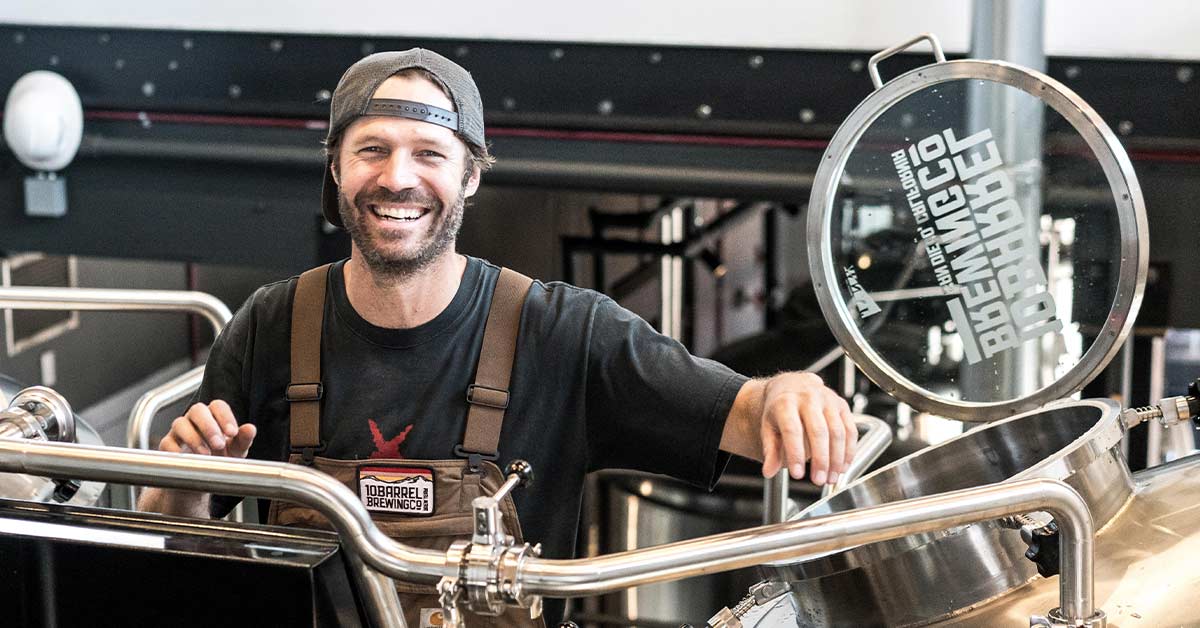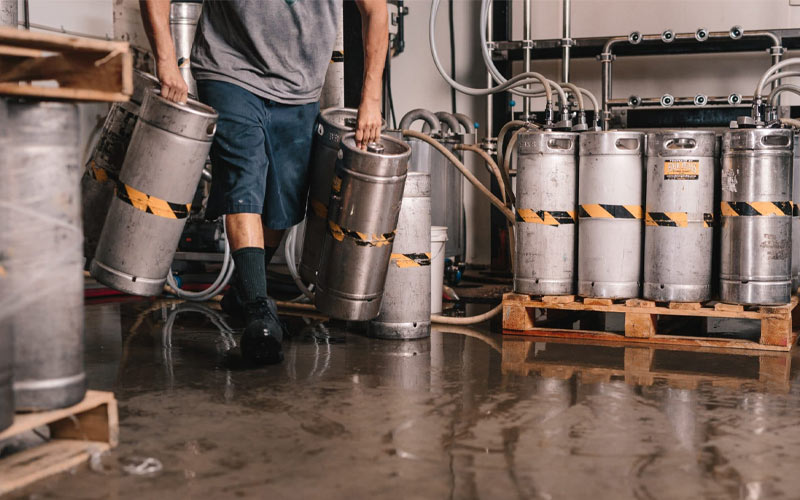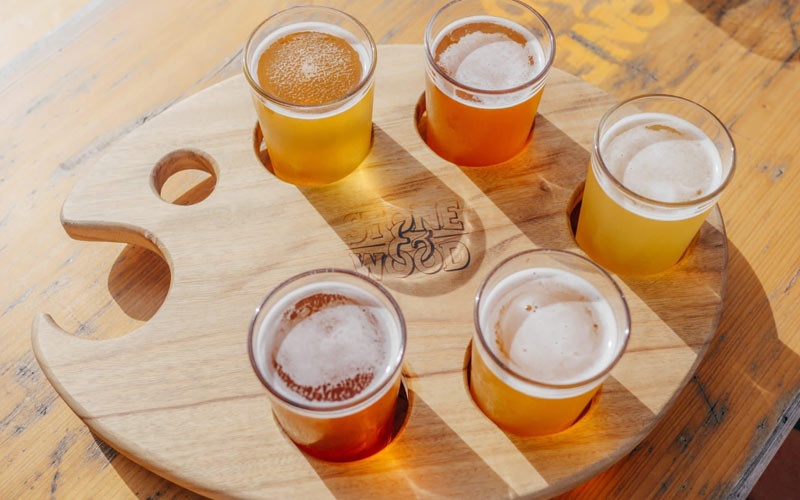
With craft brewery numbers on the rise, it might be time to consider opening a brewery of your very own. But there are a lot of things to consider before diving in – market saturation, your personal industry experience and overall cost are just a few of the major considerations.
We’ve broken down some industry numbers on the craft beer scene and talked to experts in the field to ask what they wish they knew before opening their own breweries.
In this article we’ll cover:
- Brewery opening and closing statistics
- How much it costs to open a brewery
- Advice from four brewery owners and founders
- 5 ways to make your brewery tasting experience stand out
7 Ways to Run Your Restaurant Smarter
Discover future-proof restaurant tactics that add flexibility to your business—a key to thriving in the new world of hospitality.
Brewery opening and closing statistics
The Brewer’s Association’s annual report states that there were 8,764 brewpubs, taprooms, microbreweries and regional breweries in the US in 2020. And while retail sales of craft beers decreased 22% to $22.2 billion, that is largely due to more packaged beer sales in 2020 and fewer restaurant and bar sales, which have a higher markup.
And while overall dollar sales were down, the number of breweries and taprooms that were newly opened exceeded the rate of ones that were permanently closed, showing that there is still a high demand for locally made craft beers.
Number of craft breweries in the US by type

Source: Brewer’s Association
Craft brewery industry statistics
Additional statistics from the Brewer’s Association report include:
- Craft beer accounted for 12.3.% of the total beer market, with 19.5% going to imported beers and 68.2% to other domestic varieties.
- In 2020, taprooms (9.9%) and large non-craft breweries (8.1%) had the biggest growth, while microbreweries (1.8%) and brewpubs (1.5%) had the slowest growth.
- The only segment that showed negative growth was regional craft breweries (-8.3%).
Millennials are breweries’ target customers
- Be active on social media: 62% of millennials are more likely to become loyal customers if they interact with your brand online.
- Offer flights and specials: Millennials have less disposable income due to lower wages and increased student loan debt.
- Get involved: 67% say they are more interested in supporting a brand that gives back to the community.
How much does it cost to open a brewery?
Start-up costs can vary greatly depending on the size of your brewery, whether you want it to be a beer-only or a brewpub, and location. Incfile estimates that it will cost between $250,000 and $2.5 million to open a new brewery, considering the following costs.
- Brewing equipment (anywhere from $100,000 to $1 million) like kegs, kettles, boilers, bottling or canning lines, labeling machines, fermentation tanks, storage tanks and more.
- The lease or rent on your space.
- The amount of build-out you will have to do in your new space, including things like plumbing, flooring, electrical updates, building a bar and/or kitchen, decorations, fixtures, furniture and more.
- Licenses to serve and brew alcohol, serve food, and possibly more, depending on your location.
- A bar POS system to help you manage staff, track loyalty rewards, accept online orders and more.

How to start a brewery: advice from four founders
We asked four brewery owners to tell us what advice they would give to someone who wants to break into the industry and what they wish they’d known before they started their business.
- Brad Cooper, founder and head brewer at Steam Bell Beer Works in Midlothian, VA
- Steve Seto, founder of HolyCraft Brewery in San Francisco, CA
- Scott Roth, president and founder of Three Notch’d Brewing Company with four locations across Virginia
- Dan Schwarz, co-founder and CEO of Lift Bridge Brewery in Stillwater, MN
Get to know the craft beer industry
Cooper: Spend time beforehand getting to know other people in the craft beer community. Spend time at local breweries and pick the brains of anyone working there, from the guy scrubbing the toilets to the owner of the business.
Create a brewery business plan
Seto: Have a really solid plan and try to factor as many bumps in the road as possible. Things never go exactly how you plan them but having a really solid plan and sticking to it helps when problems do arise.
When we first started our company we had tons of issues relating to timing, equipment failure and technology issues. This occasionally translated to issues with our client base. I can’t stress how important it is to be ready for anything and to be prepared for the worst. Business for us today is much smoother operationally and it makes all the difference in the world.
Get industry experience before going out on your own
Roth: The number one thing I recommend to anyone who is starting a business is to make sure that they have experience in the industry first. Getting behind a bar at a taproom, spending time shadowing a pro-brewer, meeting with an executive at a brewery to understand the financials—the more hands-on experience you have as an owner, the quicker you can diagnose problems, gain the trust of your staff and, for those looking for capital, give you a background in the space that will be necessary to entice investors.
What I wish I knew before opening a brewery
Cooper:I wish I had gotten my own financial house in order. My previous career was in the mining industry and I knew I wanted to make the change. I was in the middle of getting some personal debt paid off while simultaneously planning to open a brewery.
One day I was fired from my job (for bringing homebrew to coworkers) and instead of seeking out another job, I chose to throw all of my efforts into opening a brewery. On several occasions, during startup and opening, I had to forego a salary to pay for something for the business and I began a game of “Which bill can I stretch out this month?”
Seto: There are many things I wish I knew before HolyCraft started, but the biggest thing would be the cost of distribution and packaging. Distribution in the beer world is pretty complex and costly, as is packaging. Having an idea of all these separate costs from just the beer making and sales alone would have been far more helpful.
As HolyCraft grew we could no longer self-distribute out of the personal cars, as demand was too much. The cost of a distributor and their willingness to help also plays a big role in one’s consideration. Not always are the results positive, and knowing that would have helped us better to plan around these situations.
Schwarz: Make sure you have a solid business plan and good corporate documents. They are important to properly set in place and complete so everyone involved knows what the road map is and how you handle any disagreements should they arise.
Roth: This may not apply to many others, but we began our own distribution company and I wish I had spent more time in that space before getting into that business. We have ultimately grown that company very nicely, but we made a ton of mistakes early on that could have been avoided if I had known what I know now.
5 ways to make your brewery tasting experience stand out
For a guest, one of the best parts of visiting a new brewery is a tasting, where they can sample everything you have to offer. Here are five tips on how to make your brewery’s tasting experience stand out from the pack.
1. Hire the best “beertenders”
The real make or break of an entire tasting relies heavily on your beertender. You want someone knowledgeable about your beers and the industry as a whole who has a friendly and social personality. A great conversation with a beertender will create a positive experience and many lifelong customers.
2. Have something special on tap
Having a specialty selection that guests can’t get in bars or liquor stores is a great way to bring them into your taproom. Hold brewery-exclusive tastings of small, experimental batches or invite guests in to taste a seasonal brew a couple of months before it’s released. Don’t forget to promote!

3. Give people as many options as possible
Offer anyone who’s completed a tasting a discount on a flight or half-pours. Maybe they didn’t find anything they really loved in the first round, so give them as many opportunities as possible to find their favorite.
4. Establish your brewery’s feel
Do you want to run a brewpub and offer full meals or are you going for more of a “hanging out in the basement playing pinball” vibe? If you aren’t sure exactly which direction you want to go in, take a look at the demographics in the area you want to open and what the other nearby breweries are doing. Figure out what is missing and how you can fill that gap.
5. Let guests bring the experience home
The limited-edition brews you have on tap will bring guests in, so let them bring that part of the experience home. Offer special growlers or mixed six-packs so they can bring their favorites back to share with friends and family. This lets them share their tasting experience with others and creates free word-of-mouth advertising for you.
In addition to the guest experience, the right technology partner helps streamline day-to-day operations so that you can focus on what’s really important—your staff, your guests and your beer. Talk to one of our experts today to find out how Lightspeed can help.

News you care about. Tips you can use.
Everything your business needs to grow, delivered straight to your inbox.



